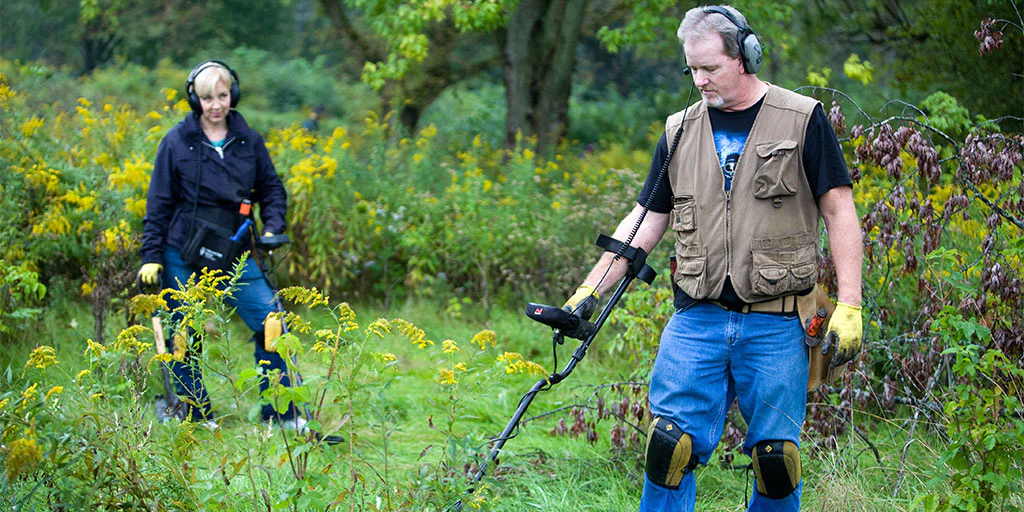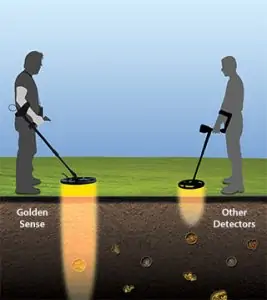Ground Balance
Ground Balance is a variable setting that increases detection depth in the mineralized ground. This ground may contain salts, such as in wet beach sand or fine iron particles, such as in red earth. These minerals respond to a detector’s transmit field in a similar way that a target does. Due to the much larger mass of the ground compared to a buried target, the effect of mineralization can easily mask small targets. To correct this the Ground Balance setting removes the responding ground signals, so you clearly hear target signals and are not distracted by ground noise.
There are three main types of Ground Balance:
- Manual Ground Balance – Manually adjust the Ground Balance setting, so the minimum amount of ground signal is heard.
- Automatic Ground Balance – The detector automatically determines the best Ground Balance setting. This is quick, simple and more accurate than a manually set Ground Balance.
- Tracking Ground Balance – The detector continuously adjusts the Ground Balance setting while detecting. This ensures that the Ground Balance setting is always correct.
Frequency
The frequency of a metal detector is one of the main characteristics that determines how well targets can be detected. Generally, a single frequency detector that transmits at a high frequency will be more sensitive to small targets and a single frequency detector that transmits at low frequencies will give more depth on large targets
Discrimination
Discrimination is a metal detector’s ability to identify buried targets based on conductive and/ or ferrous properties. By accurately identifying a buried target you can decide to dig it up or consider it as junk and continue searching.
There are four main types of discrimination:
- Variable discrimination – The simplest type of discrimination which uses a control knob to adjust the level of discrimination.
- Iron Mask/Iron Reject – Used mostly with gold prospecting detectors to ignore iron junk.
- Notch discrimination – Allows specific target types to be accepted or rejected.
- Smart find – The most advanced form of discrimination. Target IDs are plotted based on both ferrous and conductive properties on a two dimensional (2D) display. Individual segments or larger areas of the display can be shaded to reject unwanted targets.


